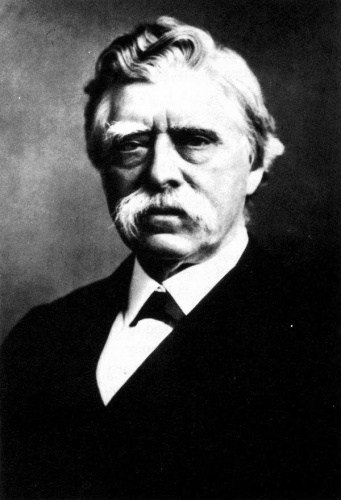In a fascinating insight into one of the key inventions of the modern world, one of the two competing inventors of the microphone took to the pages of The Engineer to argue his case. Furious at the attempt of the renowned American inventor Thomas Alva Edison to claim the microphone as one of his battery of new technologies, Prof David Edward Hughes, a Welsh scientist and musician who had emigrated to the US with is family at the age of seven, wrote to our predecessors to denounce Edison and claim the invention as his own.

Now relatively unknown, Hughes was a prolific inventor in his own right. An experimental physicist specialising in signal processing, he invented a printing telegraph system in 1855 which was the fore-runner to today’s modems, and in 1879 discovered that sparks generated a radio signal that could be listened to using a telephone receiver and developed a spark-gap device to send Morse code; now believed to be the first radio signal transmitter. Among his other inventions was the semiconductor diode in the crystal radio. He was also an accomplished harpist, a virtuoso, reportedly, from the age of 6.
In 1878, however, he was in a combative mood. ‘I notice with regret that Mr Edison has been trying to make the American public believe he also invented the microphone,’ he said. Edison’s invention used a carbon diaphragm to intercept sound waves, its vibration creating a varying electric current. Hughes’ invention, which he claims for 1866, was quite different, he argued, and used no carbon diaphragm or in fact any diaphragm at all; ‘entirely different in principle, form, uses and results to the carbon transmitter of Edison,’ Hughes said. ‘There is no diaphragm, thick or thin, there is no mechanical apparatus by which the sounds are directed or concentrated upon the electrical conducting material, no arrangement to obtain a varying pressure… There is not the slightest necessity for the use of carbon at the contact points.’

Hughes’ microphone used a ‘piece of pine board or any resonant material’ to pick up sound. ‘If, on any part of this board no matter how distant from the speaker or source of sound, two electrical conductor are placed under slight but constant pressure, these conductors vibrate exactly as… the agitation… of the board, and of themselves, without any regulation, without any change of pressure, transform a constant electric current into waves in exact form with the sonorous vibrations.’ That, Hughes argued, is a microphone.
The irony is that what Hughes described is not what we know as a microphone, while Edison’s version is the basis of the technology we use today. In fact, the descendent of Hughes’ invention is the basis for something often found in close proximity to a microphone: the pickups of an electric guitar.




IEA report claims batteries are ‘changing the game’
my comment was ironic, of course they should not be waiting around at all …